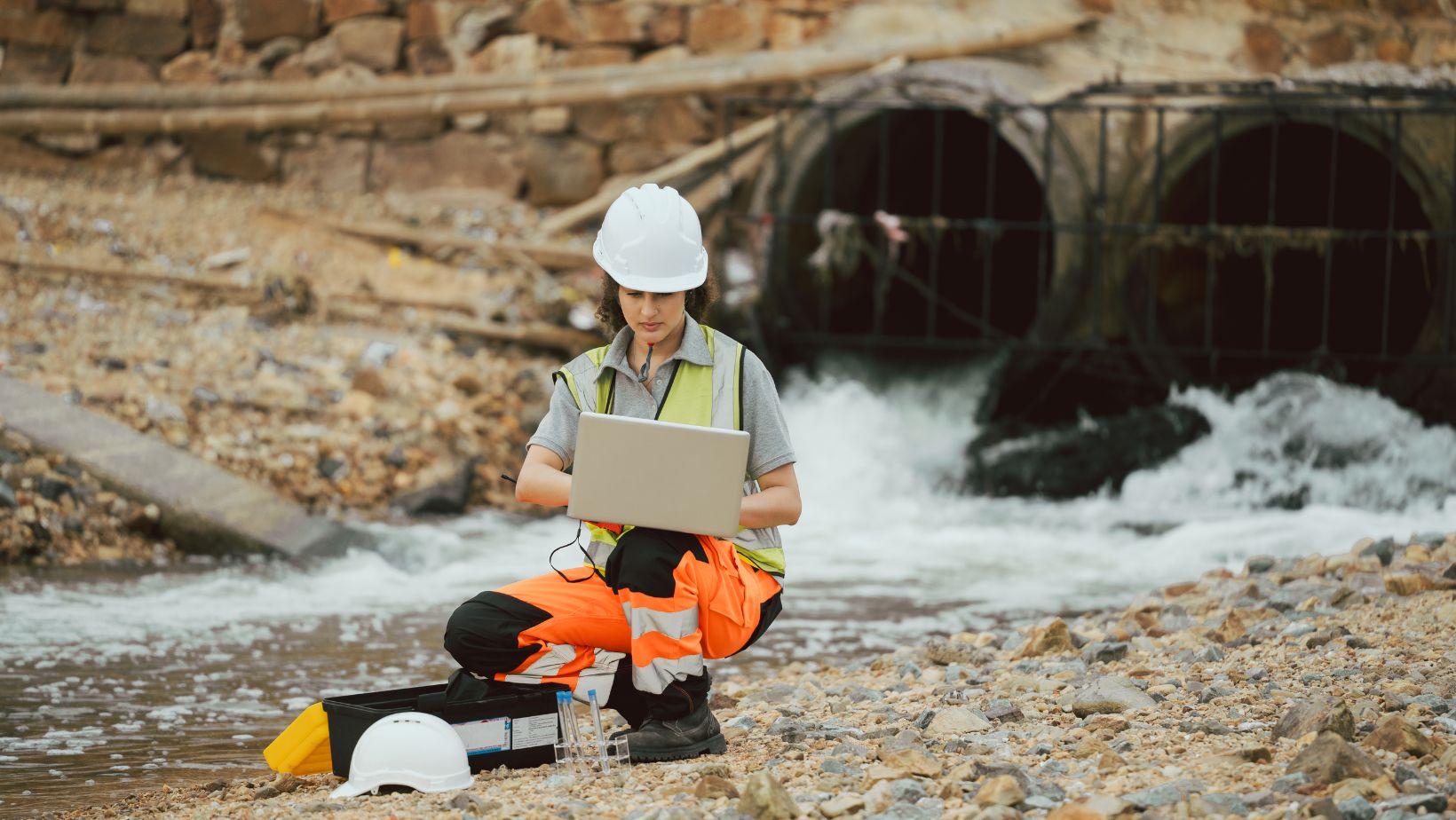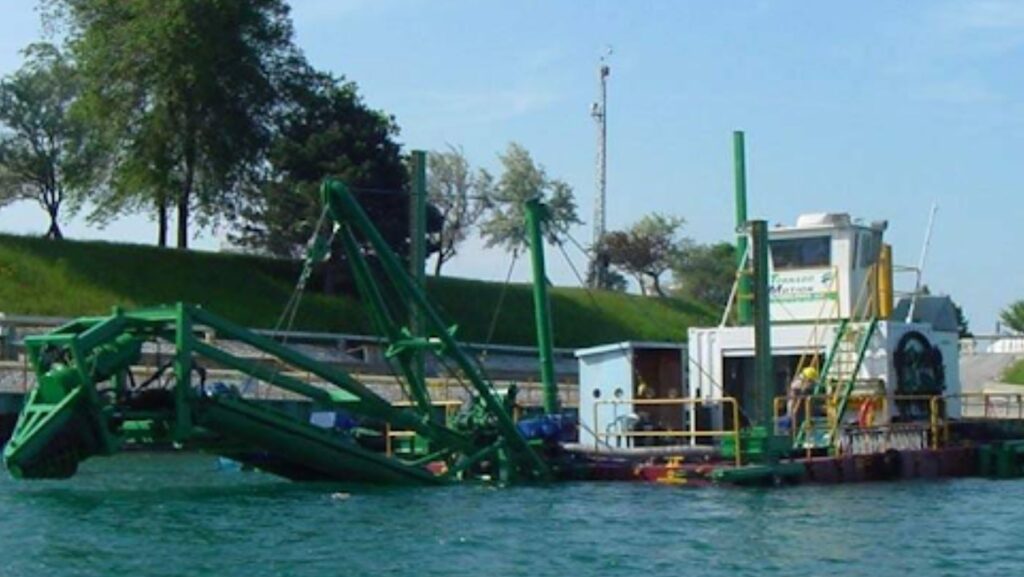As North America faces mounting pressures on its freshwater ecosystems, from industrial pollution to agricultural runoff and urban expansion, there is an increasing demand for strategies that protect and restore these critical resources. Among the most effective and sustainable solutions is environmental dredging, a specialized practice that removes contaminated sediments while preserving aquatic ecosystems. Unlike traditional dredging, which often prioritizes navigation or infrastructure development, environmental dredging focuses on protecting water resources, safeguarding ecological and human health.
Understanding Environmental Dredging: Methods and Objectives
Environmental dredging is the targeted removal of contaminated or excess sediments from water bodies to restore ecological balance and improve water quality. Its primary goals include sediment removal and restoration, reduction of pollutant bioavailability, and the reestablishment of aquatic habitats. These objectives are distinct from commercial or navigational dredging, which often reshapes water bodies for ports or shipping routes.
One of the core reasons for environmental dredging is the management of pollutants that have settled into sediment layers over the course of decades. These toxic sediments can act as long-term sources of contamination, slowly leaching harmful substances back into the water column. By removing these layers, environmental dredging effectively cuts off this pathway, contributing significantly to dredging and water quality improvement.
Key Technologies and Environmental Dredge Equipment
Modern environmental dredge equipment has evolved to align with environmental standards and minimize ecological disruption. Hydraulic dredgers, cutterhead suction dredges, and pneumatic systems are commonly used due to their ability to extract sediments with precision and control. These tools allow operators to isolate and remove targeted sediment layers while minimizing contaminant resuspension.
Other innovations in eco-friendly dredging solutions include real-time monitoring systems, geotextile dewatering tubes, and low-turbidity dredging heads. These tools not only enhance operational accuracy but also ensure compliance with environmental regulations. The equipment used must be adaptable to varied aquatic environments, from shallow wetlands to deep rivers, and capable of supporting comprehensive environmental sediment management plans.
Sustainable Dredging Practices for Long-Term Impact
The long-term success of environmental dredging projects depends on adopting sustainable dredging practices. These include techniques and protocols that reduce energy consumption, minimize carbon emissions, and avoid collateral damage to surrounding ecosystems. Among the most critical components are:
- Selective dredging: Targeting specific sediment layers to avoid unnecessary disruption.
- Containment barriers: Installing silt curtains or sheet piling to prevent sediment dispersal.
- Sediment dewatering: Processing removed materials in an environmentally responsible way.

These practices also involve careful planning of sediment transport and disposal. In some cases, dredged material can be reused in land reclamation or habitat restoration, turning waste into a valuable resource. Such strategies align with broader sustainability goals and contribute to the holistic restoration of aquatic ecosystems.
Additionally, maintaining sustainable practices throughout the dredging process depends on regulatory compliance and stakeholder participation. Responsible dredging operations must include long-term monitoring plans, baseline ecological research, and environmental impact assessments.
Dredging and Water Quality: Improving Clean Water Access
Improving water quality for ecological and human use is one of the most obvious advantages of clean-water dredging. Heavy metals, hydrocarbons, nutrients, and other hazardous substances are frequently found in contaminated sediments. These pollutants damage aquatic life, deteriorate water quality, and endanger human health if left unchecked.
Environmental dredging helps achieve quantifiable improvements in water clarity, oxygen levels, and nutritional balance by physically removing these hazardous contaminants. Consequently, this promotes the restoration of aquatic food chains, boosts the safety of water sources for neighboring towns, and improves recreational water use.
Water quality and dredging are inextricably related, particularly in systems that frequently experience eutrophication, algal blooms, or sediment-laden runoff. For instance, the cycle of detrimental algal blooms that endanger freshwater lakes and reservoirs can be stopped by removing phosphorus-rich sediments.
North American Dredging Projects: Regional Perspectives
Dredging initiatives in North America demonstrate an increasing commitment to sustainable water management and environmental restoration across the United States and Canada. Although the breadth and location of these programs differ greatly, they all aim to improve ecological integrity, safeguard drinking water sources, and promote biodiversity.
Regional factors, such as sediment composition, hydrological conditions, and land-use patterns, influence the design and implementation of each project. In northern regions, dredging may focus on legacy pollutants from historical industries, while in agricultural zones, it often addresses nutrient loading and sediment accumulation.
Regardless of location, all projects must adhere to strict environmental guidelines and best practices for environmental sediment management. This includes thorough sediment testing, risk assessments, and integration with broader watershed planning efforts.
Aquatic Ecosystem Restoration through Sediment Management
Healthy aquatic ecosystems rely on clean, well-oxygenated sediments. Excessive sedimentation smothers ecosystems, disrupts hydrology, and diminishes the resistance of aquatic species. Environmental dredging helps to resuscitate these habitats by restoring natural substrate conditions and removing physical impediments to aquatic life.
Dredging alone is seldom enough to restore aquatic habitats effectively. It might involve replacing native vegetation, restoring natural flow regimes, and eradicating exotic species. However, dredging serves as a foundation by addressing the core causes of deterioration,dirty or excessive sediment deposits.
Restored ecosystems help to increase biodiversity, maintain food webs, and provide important spawning and nursery grounds for fish and invertebrates. In metropolitan areas, restored rivers offer social and recreational benefits, underscoring the importance of incorporating eco-friendly dredging techniques into environmental planning.
Environmental Sediment Management Frameworks
A successful environmental dredging initiative relies on a robust environmental sediment management framework. This framework guides decision-making throughout the project lifecycle, from site assessment and dredge planning to post-dredging monitoring and maintenance.
Key components of an effective sediment management plan include:
- Characterization of sediment contamination: Determining the type and extent of pollutants present.
- Risk-based prioritization: Identifying high-risk areas for urgent intervention.
- Disposal and reuse strategy: Choosing between secure landfilling, confined disposal facilities, or beneficial reuse applications.
These guidelines ensure that dredged material is managed to safeguard both the environment and human health. They also assist in coordinating dredging activities with area conservation goals, regulatory needs, and climate adaption initiatives.
Furthermore, adaptive management, which allows for continuous examination and change, is critical to long-term success. These frameworks are adaptable and robust to changing environmental conditions because they include scientific data, stakeholder feedback, and technology improvements.
Conclusion: The Future of Environmental Dredging in Water Resource Protection
As North America continues to grapple with the consequences of pollution, climate change, and water scarcity, environmental dredging stands out as a critical tool for protecting and restoring vital freshwater systems. From sustainable dredging practices to cutting-edge environmental dredge equipment, the field is evolving rapidly to meet the needs of modern environmental stewardship.
The integration of dredging for water resource protection into long-term planning reflects a growing recognition of its value, not just for infrastructure and navigation, but for the health of entire ecosystems and communities. When executed with care and precision, environmental dredging contributes directly to clean water outcomes, supports the restoration of aquatic ecosystems, and reinforces the resilience of North America’s most critical natural resources.
Looking ahead, innovations in eco-friendly dredging solutions, improved sediment management strategies, and collaborative policy frameworks will shape the next generation of North American dredging projects. By prioritizing sustainability, science-based practices, and environmental integrity, we can ensure that our water resources remain protected for generations to come.

